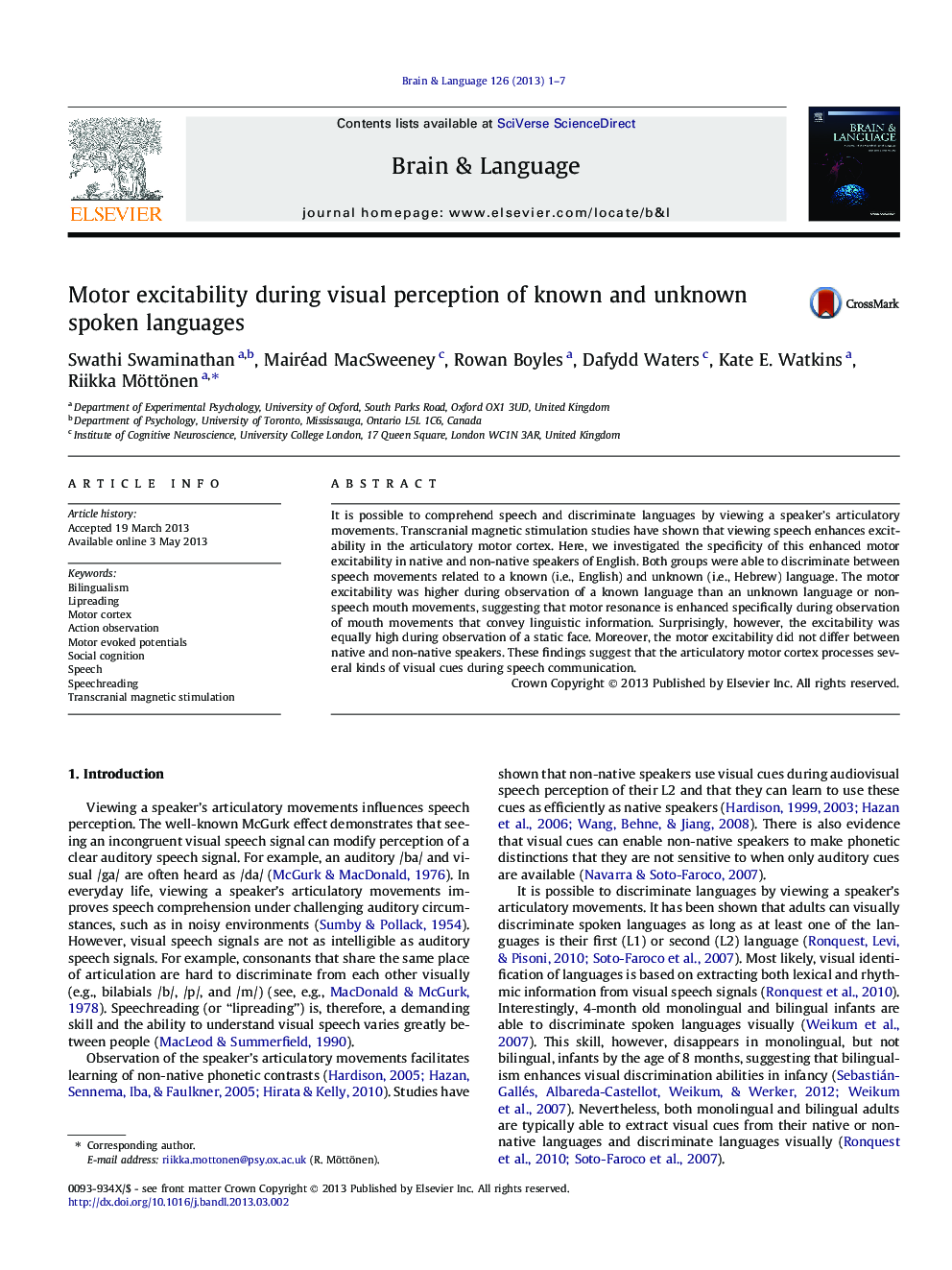| Article ID | Journal | Published Year | Pages | File Type |
|---|---|---|---|---|
| 10456480 | Brain and Language | 2013 | 7 Pages |
Abstract
It is possible to comprehend speech and discriminate languages by viewing a speaker's articulatory movements. Transcranial magnetic stimulation studies have shown that viewing speech enhances excitability in the articulatory motor cortex. Here, we investigated the specificity of this enhanced motor excitability in native and non-native speakers of English. Both groups were able to discriminate between speech movements related to a known (i.e., English) and unknown (i.e., Hebrew) language. The motor excitability was higher during observation of a known language than an unknown language or non-speech mouth movements, suggesting that motor resonance is enhanced specifically during observation of mouth movements that convey linguistic information. Surprisingly, however, the excitability was equally high during observation of a static face. Moreover, the motor excitability did not differ between native and non-native speakers. These findings suggest that the articulatory motor cortex processes several kinds of visual cues during speech communication.
Keywords
Related Topics
Life Sciences
Neuroscience
Biological Psychiatry
Authors
Swathi Swaminathan, Mairéad MacSweeney, Rowan Boyles, Dafydd Waters, Kate E. Watkins, Riikka Möttönen,
